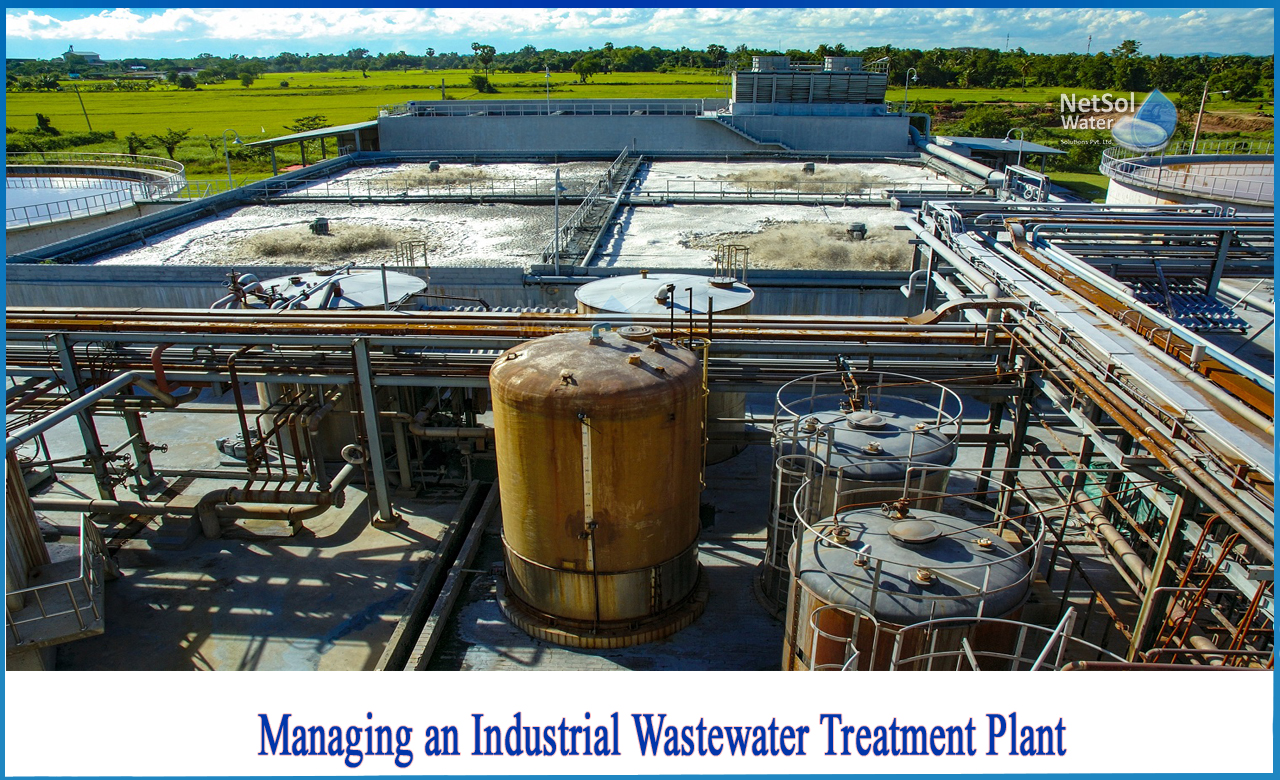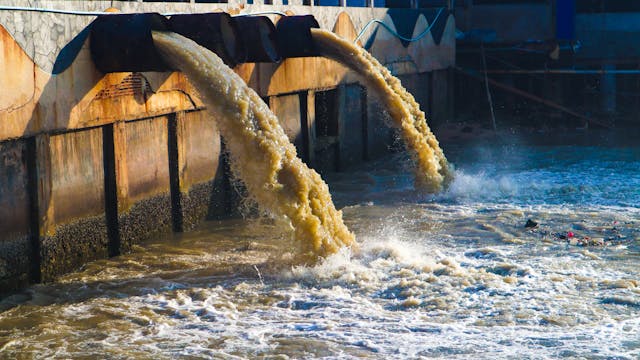Industrial Waste Water Treatment-- Cutting-Edge Technologies for Water Purification
Industrial Waste Water Treatment-- Cutting-Edge Technologies for Water Purification
Blog Article
Trick Strategies in Industrial Waste Water Therapy Procedures
The treatment of commercial wastewater is an important element of ecological management, entailing a variety of strategies created to mitigate the effect of impurities. From the basic physical approaches that separate solids to the sophisticated chemical and organic procedures that target details pollutants, each method plays an essential role in attaining water top quality standards. Additionally, advancements in modern technologies such as membrane filtration and advanced oxidation procedures offer cutting-edge options for boosting therapy efficacy. Recognizing how these methods interconnect and their effects for sustainability elevates essential questions about the future of wastewater monitoring in industry.
Physical Treatment Approaches
Just how effectively can physical treatment methods attend to the complexities of commercial wastewater? Physical treatment techniques play a pivotal role in the initial stages of wastewater management, concentrating mainly on the removal of solids and big particulates. Techniques such as sedimentation, purification, and flotation are important for decreasing the concentration of put on hold solids, thus improving the efficiency of subsequent treatment processes.
Sedimentation includes the gravitational settling of solids, enabling for the splitting up of larger products from the wastewater. This method is particularly efficient in making clear water before chemical or biological treatments. Filtration, on the various other hand, uses different media to catch particulate matter, guaranteeing that smaller contaminants are eliminated. This technique can be customized to suit different kinds of commercial effluents, producing more clear effluent streams.
Additionally, flotation protection techniques, which use air bubbles to raise put on hold solids to the surface for removal, are efficient in dealing with wastewater with high focus of fats, oils, and oils. On the whole, physical treatment approaches act as an important initial step in the comprehensive management of industrial wastewater, guaranteeing that the lots on succeeding treatment phases is lessened and improving overall treatment effectiveness.
Chemical Treatment Strategies
While physical treatment approaches prepared for reliable wastewater management, chemical therapy methods are crucial for addressing the extra complex pollutants often located in industrial effluents. These techniques make use of different chemical representatives to precipitate, reduce the effects of, or oxidize harmful materials, ensuring an extra complete removal of contaminants.
One common method is coagulation and flocculation, where chemical coagulants such as aluminum sulfate or ferric chloride are contributed to promote the aggregation of suspended particles. This process enhances solid-liquid separation, lowering turbidity and boosting water top quality. In addition, neutralization processes are employed to adjust the pH of wastewater, utilizing bases or acids to counteract acidic or alkaline streams, respectively.
Oxidation-reduction responses play an important function in degrading natural impurities and virus. Chemical oxidants like hydrogen, chlorine, or ozone peroxide are utilized to damage down complicated organic compounds, making them much less hazardous or much more biodegradable. In addition, advanced oxidation procedures (AOPs) integrate several oxidation techniques to boost contaminant elimination effectiveness.
Organic Treatment Procedures
The efficiency of wastewater treatment is dramatically enhanced by biological therapy procedures, which harness the all-natural metabolic tasks of microorganisms to decay raw material and get rid of contaminants. Industrial Waste Water Treatment. These procedures primarily include cardio and anaerobic food digestion, each tailored for certain kinds of wastewater
Cardiovascular therapy processes use oxygen to support microbial development, advertising the breakdown of natural contaminants into carbon dioxide and water. Typical methods consist of triggered sludge systems, where aeration tanks assist in the blending of wastewater with bacteria, and dripping filters, which encourage biofilm development on media surfaces.
On the other hand, anaerobic therapy procedures take place in the lack of oxygen, utilizing anaerobic microorganisms to decay raw material, causing biogas manufacturing, a renewable resource resource. Anaerobic digesters are often employed in industrial settings for this objective, effectively decreasing the volume of sludge while generating important biogas.
The selection of a biological therapy method depends upon wastewater qualities, therapy goals, and regulatory requirements. The combination of biological procedures in wastewater therapy not only enhances contaminant removal effectiveness however additionally advertises sustainability by lessening chemical usage and supporting source recuperation.
Advanced Oxidation Processes

Usual AOP strategies consist of Fenton's photocatalysis, reagent, and ozonation. Fenton's reagent, a mix of hydrogen peroxide and ferrous iron, catalyzes the formation of hydroxyl radicals, making it efficient for dealing with wastewater containing phenolic substances and other stubborn compounds.
AOPs use a number of advantages, including decreased sludge manufacturing and the capacity to deal with wastewater with high concentrations of natural toxins. Nonetheless, the implementation of AOPs requires cautious consideration of operational criteria and cost-effectiveness, making sure that these innovative techniques are properly incorporated right into existing wastewater therapy systems.
Membrane Filtering Technologies

Microfiltration is efficient for getting rid of suspended solids and germs, while ultrafiltration targets smaller sized organic molecules and viruses. Nanofiltration connects the void in between ultrafiltration and reverse osmosis, efficiently eliminating divalent ions and natural substances. Reverse osmosis offers the greatest degree of filtration, made use of primarily for desalination and removing mono-valent ions.
Membrane innovations use many benefits, consisting of reduced power intake contrasted to typical therapy approaches, modular layout for scalability, and the possibility for water recovery and reuse. Nonetheless, challenges such as membrane layer fouling and the requirement for normal upkeep need to be resolved to make certain system efficiency. Generally, membrane filtration technologies represent a vital part of modern industrial this contact form wastewater treatment strategies, advertising sustainability and source conservation in water management.
Conclusion
In conclusion, commercial wastewater treatment employs a varied variety of methods, including physical, chemical, organic, and advanced methods. Each strategy plays a crucial function in effectively resolving different contaminants, boosting water top quality, and promoting source sustainability. The combination of these techniques cultivates a detailed treatment approach, making sure that industrial effluents satisfy regulatory criteria while reducing ecological effect. Proceeded developments in these methodologies will certainly further enhance the efficiency and efficiency of wastewater treatment processes in commercial settings.
The therapy of industrial wastewater is an important aspect of ecological monitoring, entailing a variety of techniques designed to mitigate the official website impact of pollutants.How successfully can physical therapy techniques deal with the intricacies of industrial wastewater?Advanced oxidation procedures (AOPs) stand for an advanced approach in commercial wastewater treatment, made to successfully degrade natural toxins that are often immune to standard therapy methods (Industrial Waste Water Treatment).In final thought, commercial wastewater treatment utilizes a diverse variety of techniques, consisting of physical, chemical, biological, and advanced my latest blog post techniques. Proceeded advancements in these techniques will further improve the effectiveness and performance of wastewater therapy processes in industrial settings
Report this page